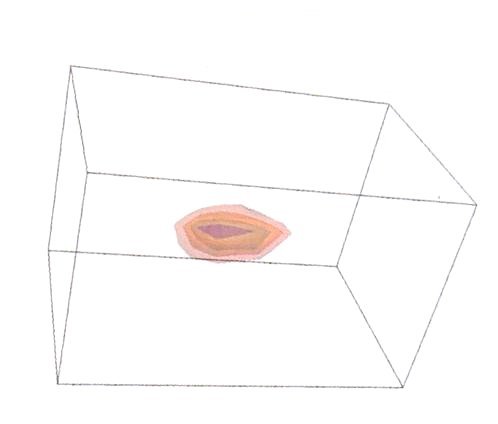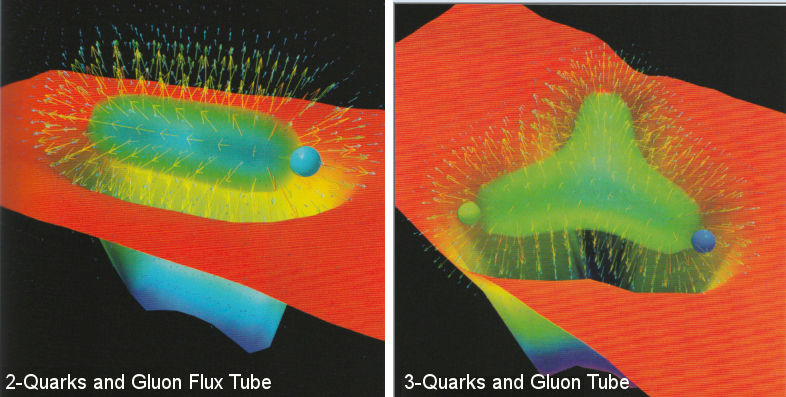
2. The force carrier (the photon) in QED does not interact with each other, but the gluons in QCD interact among themselves. This is the reason why the photon fields spread out in QED, while the gluon fields confine to a flux tube in QCD (see Figure 05e).
3. The QCD coupling constant at large distance (~ 10-14cm) approaches to 1 making it impractical to use perturbative method. The lattice theory resorts to the use of path integral by generating thousands of paths weighted according to their likelihood under the particular rule that governs the physical evolution of the system.

 i t. This 4th dimension will be added to the grid in Figure 05f. It follows that the
i t. This 4th dimension will be added to the grid in Figure 05f. It follows that the  all pathseiS (where S is the action/
all pathseiS (where S is the action/ ) now changes from oscillatory to dumping form:
) now changes from oscillatory to dumping form: 
 a),
a), 
 ann). It can be shown that in the continuum limit a
ann). It can be shown that in the continuum limit a  ) - 2N]
) - 2N]
 dUijO(Uij)exp[-SW(Uij)],
dUijO(Uij)exp[-SW(Uij)], denotes multiplicaltion of objects with indices i, j. In particular, the average of the Wilson loop is: < W(C) > = < Tr(U1, U2, ... Un)C > ~ exp(-TA)
denotes multiplicaltion of objects with indices i, j. In particular, the average of the Wilson loop is: < W(C) > = < Tr(U1, U2, ... Un)C > ~ exp(-TA) 





 , K and so on) refers to a different type of hadron. The widths of the bands indicate the experimental decay widths, the invert of which are related to the finite lifetime of the particles. The vertical error bars denote the theoretical error estimates. Three of the hadrons (
, K and so on) refers to a different type of hadron. The widths of the bands indicate the experimental decay widths, the invert of which are related to the finite lifetime of the particles. The vertical error bars denote the theoretical error estimates. Three of the hadrons ( ) have no error bars because they are used to fix the theory's parameters. Since there are (3x3x4) + (8x6) = 84 numbers at each node (quark fields have three flavours, three colours, and four components accounting for spin and antiparticles; gluon fields have eight internal directions in its symmetry group, and for each direction there are six fields: three electric and three magnetic) no computer can handle the
) have no error bars because they are used to fix the theory's parameters. Since there are (3x3x4) + (8x6) = 84 numbers at each node (quark fields have three flavours, three colours, and four components accounting for spin and antiparticles; gluon fields have eight internal directions in its symmetry group, and for each direction there are six fields: three electric and three magnetic) no computer can handle the 

